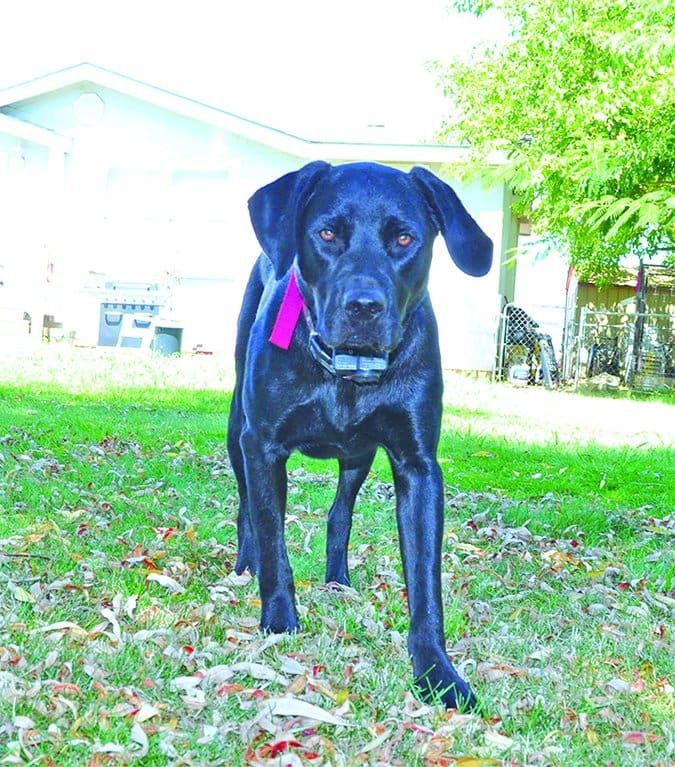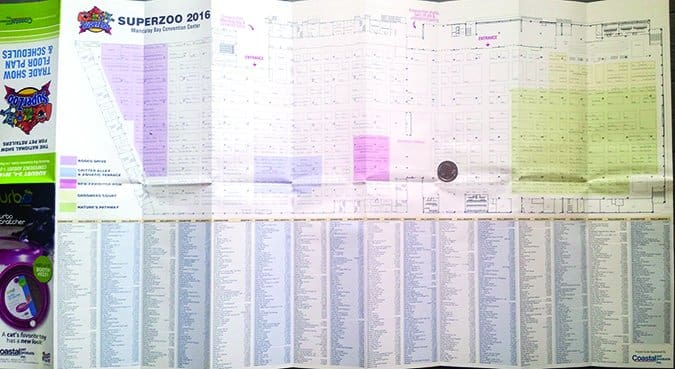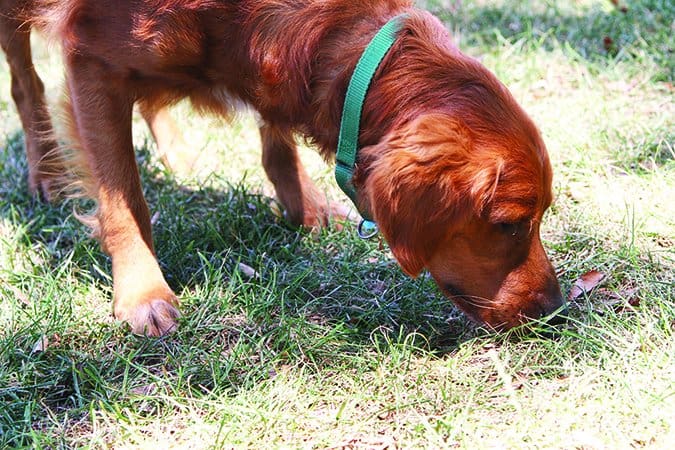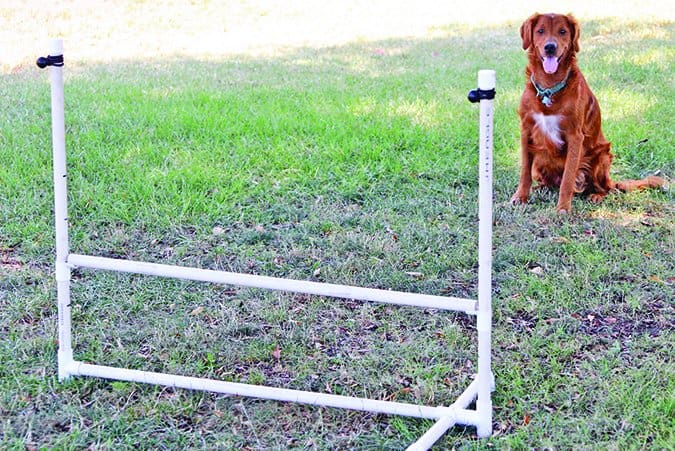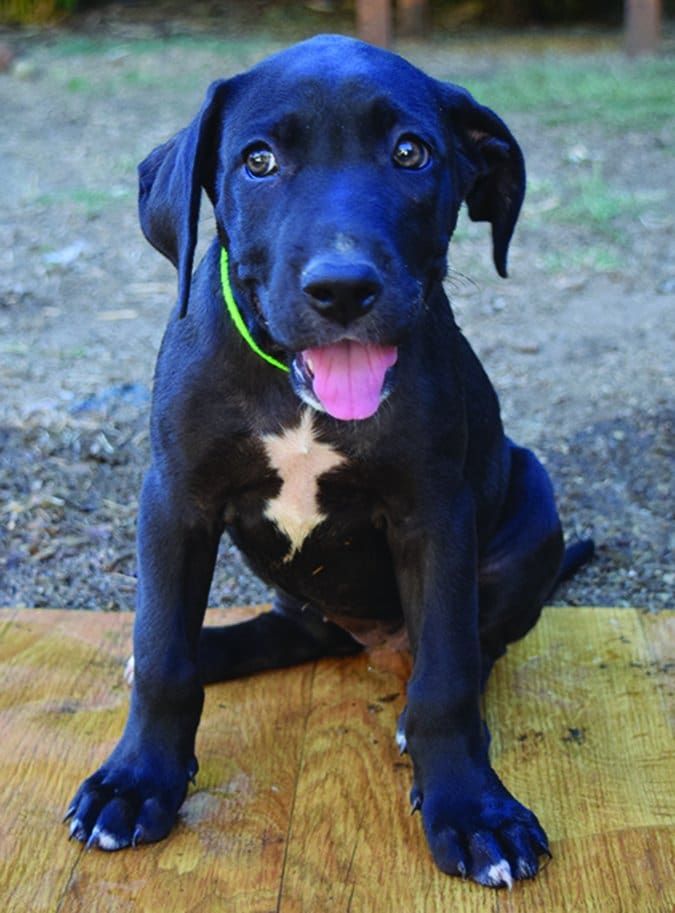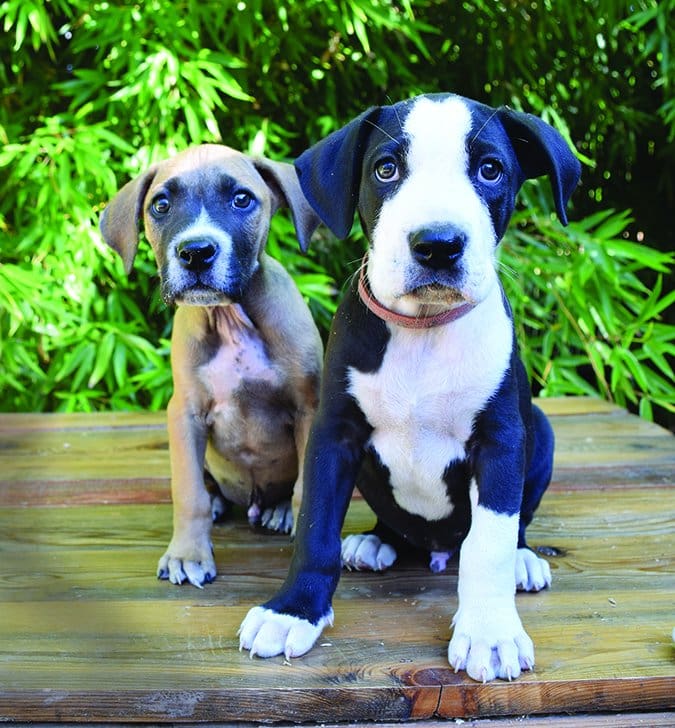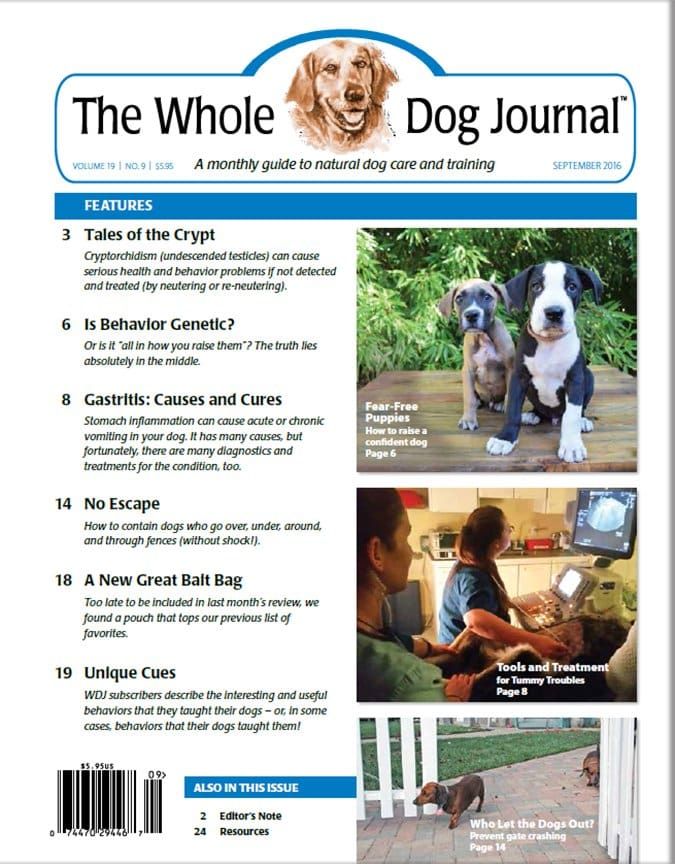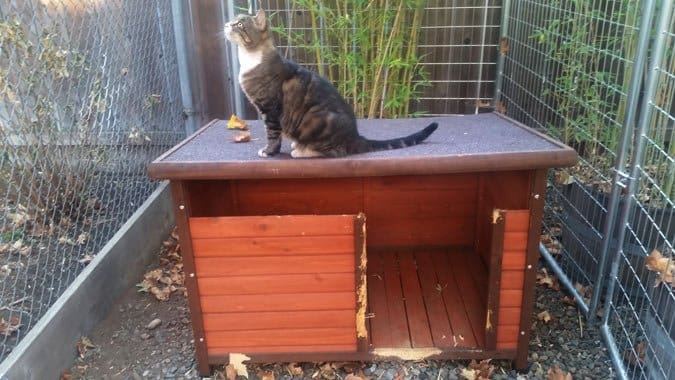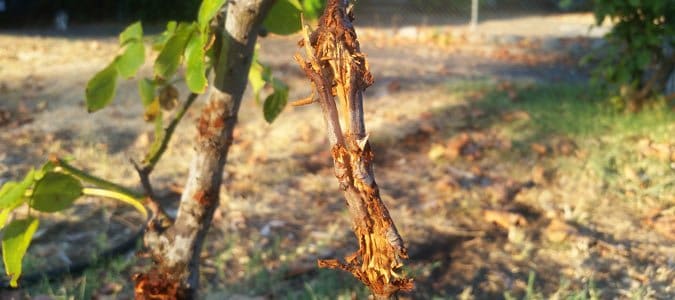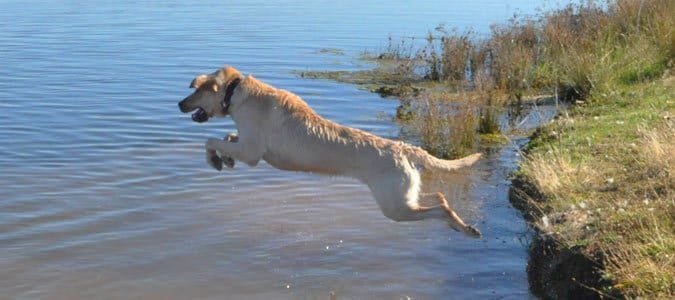Responsible dog owners go to great pains to make sure their canine family members stay safe at home and don’t go roaming unescorted around the neighborhood. The risks for a free-roaming dog are legion, including, but not limited to: getting hit by a car, shot by an irate neighbor or a police officer protecting public safety, attacking or being attacked by other animals, being picked up by animal control, or simply vanishing, never to be seen again. Yet some dogs seem hell-bent on escaping – doing everything they can think of to get over, under, around, or through their humans’ containment strategies. What do you do when you have a dog who is dedicated to escaping his yard?
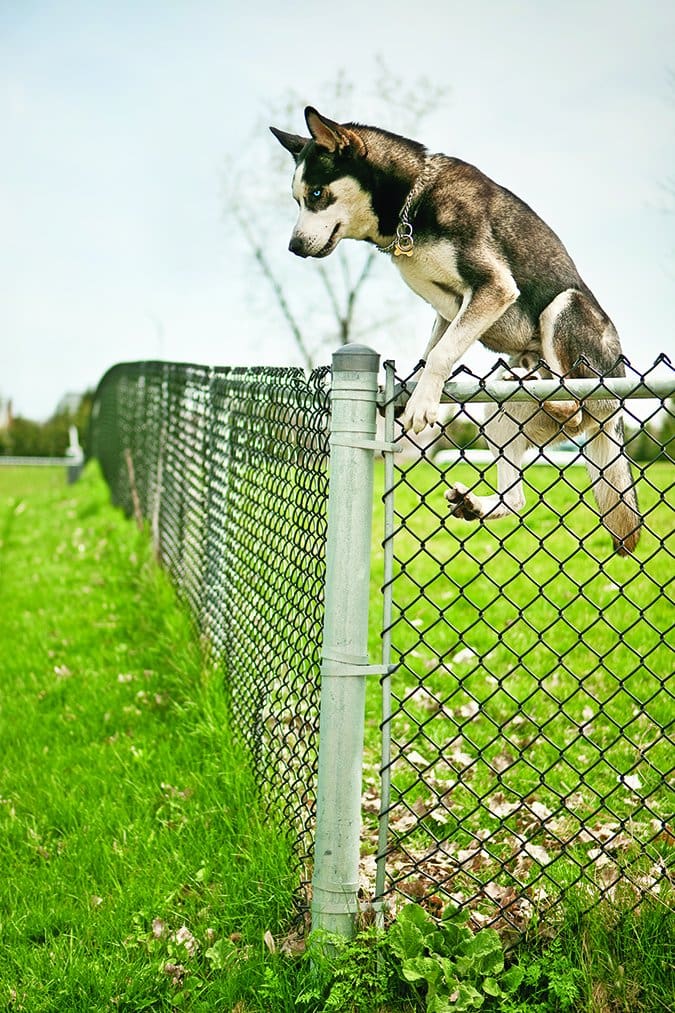
Felix Renaud | Dreamstime.com
Reasons Dogs Escape
Before we even address ways to stop your dog from escaping, we need to examine reasons why your dog may be so dedicated to breaking out of your yard. If all we do is to block his exits, he may put all his energy into finding new ways out. If we address his motivation for escaping, he may stop trying, or at least not be as dedicated to overcoming the new obstacles you put in his path.
Boredom in Dogs
Your dog may be bored. Adding more mental and physical stimulation to his life and his backyard might help him become more content to stay home. Kiddie wading pools offer a huge variety of entertainment options. If your dog loves water, fill the pool with water for actual wading and splashing fun. For a dog who loves to dig, fill the pool with dirt or sand and bury toys and treats for him to find. If you don’t want the mess of dirt or sand, fill the pool with plastic balls of various sizes and let him pounce among the balls looking for his toys and treats. There are now tons of puzzle toys that can keep him engaged in his yard; Kong Wobblers and other Kong treat-dispensing toys are some of my favorites.
By the way, speaking of boredom: your dog should not be left in the yard for long periods of time (long enough to get bored) and should never be left in the backyard all day (while no one is home) or all night (when he could easily be safely and happily indoors with you).
Arousal from Outside Stimuli
Getting stimulated by the sight of exciting things is another reason dogs are driven to escape their yards. Chain link and other livestock-wire fences are the scourge of good dog containment. They are certainly easier on the wallet than a privacy fence, but many dogs are compelled to escape when they are constantly overstimulated and frustrated by seeing a parade of dogs, humans, cars, trucks, motorcycles, skateboarders, bicyclists, mail carriers, and more passing by their yards. The added danger here is that an aroused, frustrated dog who escapes is likely to be aggressive when he finally has access to his targets.
If you can’t install a privacy fence, consider attaching something solid to your wire or chain-link fence so your dog can no longer see through it.
Male Dogs Looking for Sex
With the current trend to wait longer to sterilize (not a trend I necessarily support, but that’s another article), there are more dogs, especially intact male dogs, who are very motivated to escape to court the neighborhood female in season. The obvious solution here: neuter.
Canine Anxiety
This category brings up a whole different class of behavior challenges. Dogs who suffer separation or isolation anxiety or thunder phobia are driven to escape by their panic. Because severely stressed dogs can become destructive, owners sometimes leave these dogs outdoors to avoid damage to their homes. This is not an acceptable solution, as the panicked dog who escapes is even more likely to run in front of moving vehicles, bite someone who tries to help him, and/or run fast and far away, decreasing chances that he will be found and returned home.
You must treat the anxiety, often with medication as well as behavior modification protocols, and never leave these dogs alone outdoors. (See “Relieving a Dog’s Separation Anxiety,” July 2008.)
Dogs Just Want to Have Fun
Finally, with a history of reinforcement for escaping, your dog may simply have learned that it’s great fun to run loose, loot garbage cans, chase cats and other small animals, play with the neighbor kid, read pee-mail without interruption, romp with other neighborhood dogs, and engage in lots of other forms of canine mischief. Make it more fun for your dog to stay home, and keep on reading for thoughts on how to make it more difficult for your dog to breach your fence. (Note that I didn’t say impossible . . . .)
Management
Now that you understand some of the possible motivations for your dog’s obsession with escape, let’s talk about an overall management strategy.
First things first: If he escapes when you leave him in the yard on his own, don’t. You must always be with him in the yard, whether it’s a brief potty break or an extended “enjoy the sunshine” session. If he can escape, even if he doesn’t do it every time, he simply can’t be trusted by himself. Ever.
If he escapes even when you’re watching him, ignoring your calls to come back as he scrambles over or squeezes under, then he only goes out in the yard on a leash or a long line. Every. Single. Time. Remember, every time he gets loose and has fun chasing cats around the neighborhood, visiting his pals and getting into garbage cans, he has been reinforced for escaping, making it more than likely he will try that much harder to escape the next time.
You also need to make sure everyone in the household is on board with your management plan. It does no good for you to implement scrupulous management if your dear spouse or offspring blithely open the back door and turn Houdini loose to escape one more time.
Another important piece of management is teaching a fail-safe recall so if and when he does get out, you can get him back easily without reinforcing his “Catch Me If You Can” game of keep-away. (See “Reliable Recalls“, September 2012.) When you do get him back, make sure to do something delightfully fun with him so coming back to you doesn’t mean the fun is over. Then start improving your fence so he can’t escape.
Dogs Who Jump Over Fences
Some dogs are aerial artists, sailing over or scaling barriers with the greatest of ease. Although not exclusively, these tend to be the athletic herding, sporting, and working dogs, as well as the lean and lithe sighthounds – although some of those little terriers can surprise you with their physical abilities. If your dog is going over your fence, you’re most likely to succeed if you make the fence significantly higher. If you raise it by six-inch increments, you are simply training him to jump or climb higher and higher a small step at a time. Raise your four-foot fence to six feet in one fell swoop (assuming your local ordinances allow a six-foot fence) for the best shot at stopping your escape artist in his tracks. (Note: Also make sure there are no handy “launching pads” near the fence – a dog house, a firewood box, your child’s trampoline; even a tree can give your dog a head start over your fence.)
Some American Ninja Warrior dogs find it a simple matter to scale or sail over almost any fence, regardless of height. You can install the canine equivalent of the “warped wall” by adding an extension to your fence that angles inward at the top. This makes it much harder for your dog to judge the fence height, and ensures he can’t grab the top and pull himself over. The longer the inward extension, the harder it is for your dog to navigate a jump or climb.
If you know he is climbing rather than sailing over, consider the “Coyote Roller,” either the commercially available product or a do-it-yourself project, suspending PVC pipe on a wire at the top of your fence. Originally designed to keep coyotes out, it can be just as effective at keeping your dog in your yard. When he scales the fence and tries to grab the top to pull himself over, the pipe rolls, he can’t get a grip, and he drops back inside his yard. Another tactic that works for some for jumpers (but not all) is to plant shrubbery inside the fence line at his take-off point, so his flight path is interrupted. Of course, bushes take time to grow, so this would be a longer-term solution.
Dogs Who Dig Under Fences
Some dogs are masters at burrowing under fences. While no particular type of dog has a patent on digging, terriers and scent hounds do logically seem to excel in this behavior, given what they were bred to do. A quick fix for the groundhog dog might be to set heavy cement blocks (as in “so heavy you can barely lift them”) all along the inside perimeter of the fence. This might stop some of the more fainthearted diggers, but chances are it may only stall your dedicated digging dog while you plan and implement the more work-intensive project of burying wire 12 inches deep along the bottom of your fence, setting the cement block into the hole and covering it with dirt.
If you’re just putting up a new fence, be sure to bury it six to 12 inches into the ground to save later headache. If you want to go the landscaping route, try planting something with thorns along the inside of the fence.
Dogs Who Run Around Barriers
Beware the door dashers and gate crashers! Gate crashers are close kin to door darters, but perform their escape maneuvers from within the yard rather than the house, charging through the gate as soon as it is opened a crack by some unwary human. There doesn’t seem to be any particular type of dog that favors this behavior; any sufficiently motivated dog can learn the dash-and-run routine.
It’s not always the dog who is at fault; those most often guilty of aiding and abetting gate crashers include children, meter readers, visitors to your home, and other adults who aren’t fully committed to keeping your dog in his yard.
The best way to foil a gate crasher is to install a double-gate system like those used at many dog parks. This handily keeps the dog away from the gate to the outer world while the human enters the yard, secures the first gate behind herself, and then opens the gate into the dog’s inner yard. Other than that, your best option is to padlock all your gates and only enter the yard through the house.
Of course, you can teach your dog a solid “Wait” cue, and use it every time a gate is opened. But then you are relying on children, meter readers, visitors and non-committed adults to remember to use the “Wait” cue when they go in and out the gates. So, even better, teach your dog that the opening gate is the cue to “Wait” until he is invited out. While you’re working on that, though, better install those padlocks!
Dogs Who Go Through Fences
Then there are those dogs who just blast their way through a fence. Big, strong dogs (Rotties, Pitties, etc.) have the best shot at this escape technique, although if the fence is weak enough, smaller dogs can do it, too. Most fences seem to have boards nailed on the outside – probably for aesthetic reasons – so if nails are loose or boards are starting to rot around nail holes, a good shove from the inside can push them off.
To foil these escapees, either repair your fence so boards are solidly nailed on, or nail a solid barrier on the inside of the fence. If you are putting up a new fence, try nailing boards on the inside instead of the outside, or installing pre-built panels so boards are on the inside. Thorny landscaping might also help you here, but, again, plants take time to grow.
A Stay-At-Home Kai
Last year we adopted a year-old Australian Kelpie we named Kai. We knew our four-foot, somewhat dilapidated fence might not be adequate to contain this energetic, athletic dog. Fingers crossed, we let him into the backyard with our older dogs.
All was well for several days. Then, one morning as I was feeding chickens in the lower barn, I heard a ka-thump from the backyard. Next thing I knew Kai had joined me at the chicken coop. Clearly, he had found a way out. I prayed that he had gone through, not over. Tightening up our boards would be a much easier (and cheaper) fix than raising the fence or installing a new one.
I reported the news to my husband, Paul, also known as our farm handyman. Upon inspecting the fence, he found the loose board, and spent the afternoon re-placing and re-fastening any boards that were the least bit suspect. Kai hasn’t escaped since. Phew!
May your own escapee fixes be as simple – or at least as successful!
Book author and trainer Pat Miller, CBCC-KA, CPDT-KA, is WDJ’s Training Editor. She and her husband Paul live in Fairplay, Maryland, site of her Peaceable Paws training center.


